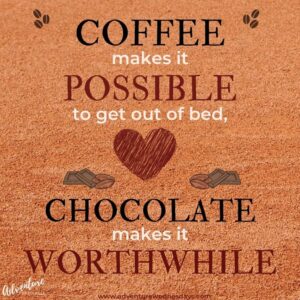
What happens when you take two common food items, coffee and chocolate, and pair them together? You may not think of this as much of a tasty adventure if your daily coffee is a mocha latte or you order a mild cup of joe with a side croissant with chocolate (or as the French call them, pan au chocolat).
But what if you experiment with different coffees and different chocolates with the intention of not just trying something new, but exploring what might fully satisfy your taste buds? Take the time to slow down, let the flavors develop. Do this with friends and the joy multiplies. To start you on the coffee and chocolate pairing path, I’ve put together this adventure in taste exploration for you. If you want just the “how to” skip to the end and click the link for the Chocolate & Coffee Pairing Party!
Brothers from another mother
Here are some tidbits of why chocolate and coffee pair so well together:
- Both have properties that give you energy (caffeine!).
- Similar fermentation process (I wrote about cacao’s process from when I visited a cacao farm in Costa Rica)
- Both grown in similar climates (East Africa and South America being the original areas)
- The have health benefits, mostly when used closest to their purer forms (black coffee or high % cacao)
- Contrary to common perception, they come from fruit trees. The fruit seeds are dubbed “beans” for their physical similarities to true beans
- Coffee and Chocolate as the main beverage of choice started in the USA during the late 1600s! (I learned about this while researching my Boston Chocolate Adventure!)
If you want to dive into how similar these two are, check out this great 4-part series “Beyond the Bean” (seriously, it’s amazing history and facts!)
Speak the language of love (helpful lingo)
Country of Origin – mass brands will take beans from a variety of regions to create a uniform flavor, consistent across all their products. It is a growing trend for craft coffees and chocolates to state where the beans came from (where they originated).
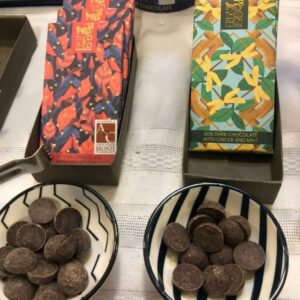
Craft chocolate (macro – Hershey’s, micro – Jcoco’s) Bean-to-bar, small batch, craft, artisan, micro-batch chocolate all refer to small-scale chocolate making.
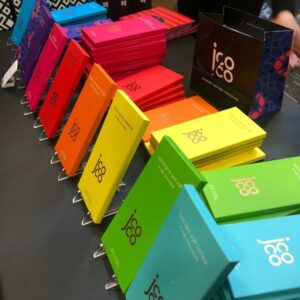
Jcoco is an exciting woman-owned brand that gives back – each purchase donates to food banks to feed the hungry!
Fair Trade -purchased from farmers at a “fair” price as defined by international agencies. Usually implies that the middlemen have been cut out so that the product is better grade.
Flavor profiles – based on the bean’s “terroir” where climate, soil, and region and then roasting process will affect flavors. Coffees often have a hint of “cocoa” when they are grown in adjacent farms.
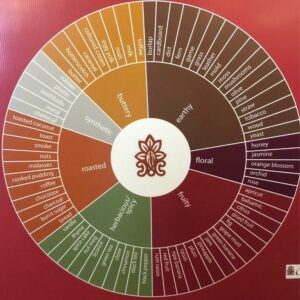
Chocopolis featured their chocolate flavor wheel at the NW Chocolate Festival
Single Origin – cacao or coffee from a single farm. Even within the same country, the beans micro-climates can have an impact on taste.
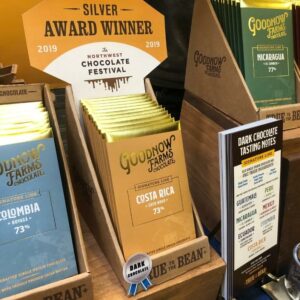
Goodnow Farms specializes in single origin bars (note how the Costa Rican bar states the region where they get the beans). I met one of the owners at the NW Chocolate Festival!
Theobromine – the “feel good” ingredient in chocolate. In mass brands (aka Hershey’s etc that you can buy at any chain store), this has been processed out (along with almost any of chocolate’s good properties). In higher cacao % bars, there’s less sugar and MORE theobromine!
A-Z on coffee terms – I am not a coffee fanatic, but I do know there are a ton of words thrown about in just about any local coffee hot spot. To add to your adventure, here’s a glossary that you can dive into for more lingo “Glossary of Coffee-Related Terms”
Prepping for a Coffee and Chocolate Pairing Adventure
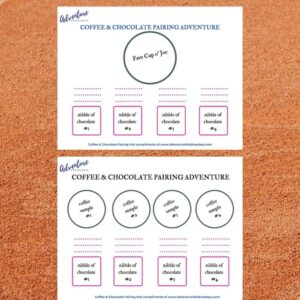
Free download of the Adventure Wednesdays Coffee & Chocolate Pairing Adventure tasting mat (8.5″ X 11″ 2-sided) Click the image or HERE
This can be a “Choose Your Own Adventure” path. Some people suggest having a one-to-one pairing – a different coffee matched with it’s own taste of chocolate. Others have lots of each and say to try a bunch. I believe your taste buds start to numb out after around 4-5 flavors. I’ve created a tasting map that gives you the option to have one coffee and several chocolates to compare and an option to sample four coffees and four chocolate bites. Alternatively, you can try one chocolate and several coffees. It’s all up to you and your taste adventurousness.
You can have a Coffee & Chocolate Pairing Party, or do the adventure by yourself…or both! You could go to a coffee shop, or make the coffee at home. For this tasting, please do not buy the mass/industrial brands (i.e. no Hershey’s or Folgers)! Go for high (or higher) end craft bars and gourmet coffees. These will most likely be Fair Trade or direct trade as well have deeper flavor notes. Many supermarkets carry a decent variety of coffees. The “better” markets will carry a wider variety of chocolates. Don’t be surprised by the higher price tags either. Good chocolate is worth it! (And, with its richness, you eat a square or so and its enough).
Coffee and Chocolate Pairing: Materials
Tasting coffee and chocolate is similar to a wine tasting. Have sample sizes, not full size. The chocolates usually have little squares or rectangles you can use as a guideline. If not, break pieces that are small enough to fit on your tongue. I recommend four types of chocolate.
On the map, place each of the chocolates. You can have the participants write in which box has which chocolate (unless you do it ahead of time). There is room for writing in notes from the flavor matches, since people usually want to remember (and have the combo again!)
If you are doing multiple coffees, have choices from lightest to dark/espresso. The general rule of thumb is to start with the lightest/mildest and go up to the darkest/highest % cacao. You can go fancy and have ceramic cups (the circles could fit the smaller espresso cups), or the small sample coffee cups.

I took advantage of Starbucks samples to create my own coffee and chocolate pairing
Pairing Suggestions
To help you get the ball rolling, I’ve researched some combinations you may want to try.
- Dark roast + dark chocolates (at least 65% up to 85% cacao works best)
- Espresso + 70% dark chocolate (or any bold dark chocolate)
- Nut-toned coffees (Brazilian, Colombian, Honduran, Indian, Mexican, and Peruvian) + spicy or fruity chocolates which are less than 70% but more than milk
- Earthy or Spicy coffees (Indonesian and Papua New Guinea) + salty chocolates, slightly bitter or bars with dried fruits
- Fruity and Floral coffees (Africans, Costa Rican, Guatemalan, Panamanian, and Salvadoran) + milk chocolate with nuts (such as almonds or hazelnuts), or possibly the new Ruby chocolates.
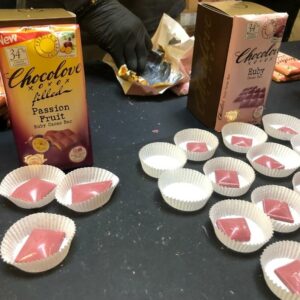
Chocolove was giving out samples of ruby chocolate – not a white chocolate but a genetically specialized bean. It tastes like a white chocolate but fruity!
Theo Chocolate + Coffee Seminar
While I was at the NW Chocolate Festival recently, I attended a coffee and chocolate pairing conducted by the Seattle-based chocolatier, Theo Apparently, they will be testing a coffee and chocolate pairing kit. If it’s successful, will be available on their website in time for Valentine’s Day.
NOTE: I was not paid to endorse any of these chocolates or coffees. All opinions are mine and from my own adventure research!
Theo chose single origin coffees to pair with their chocolates:
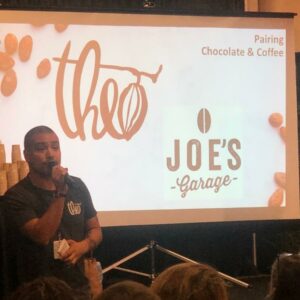
Aaron Lindstrom of Theo speaking about coffee & chocolate pairing during a seminar at the NW Chocolate Festival
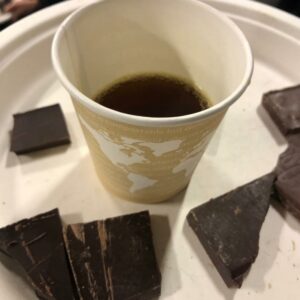
The Theo chocolates and one of the coffees from the pairing demo at the NW Chocolate Festival
- Myanmar coffee was paired with their new root beer barrel chocolate If this isn’t available near you, I would think chocolates that have caramel integrated (not as a liquid middle) would work fine.
- Uganda coffee was paired with the hazelnut crunch. You may note that the chocolate seems less sweet after sipping the coffee. In a sense, lightens and brightens it.
- Ethiopian coffee was coupled with their grapefruit ginger bar I’ve had this by itself, and it’s intense. The combination was surprisingly good! The speaker also suggested chocolate with dark berries would be pleasing to the palate.
- Columbian coffee was paired with their orange bar, which has chocolate sourced from Peru adding some extra citrus notes.
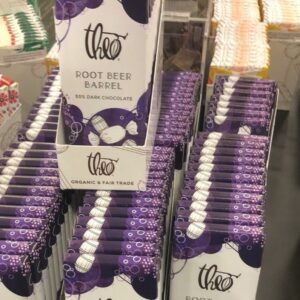
Theo’s premiered a new flavor chocolate bar – Root Beer Barrel! They had their new packaging on display at the NW Chocolate Festival
Next Up – How to do your own Coffee and Chocolate Pairing Party!

I hope you’ve enjoyed reading all this information about the excellent companions of coffee and chocolate. Now on to the good stuff! To make life simple, go to the next blog for how to have a Chocolate and Coffee Pairing Party!

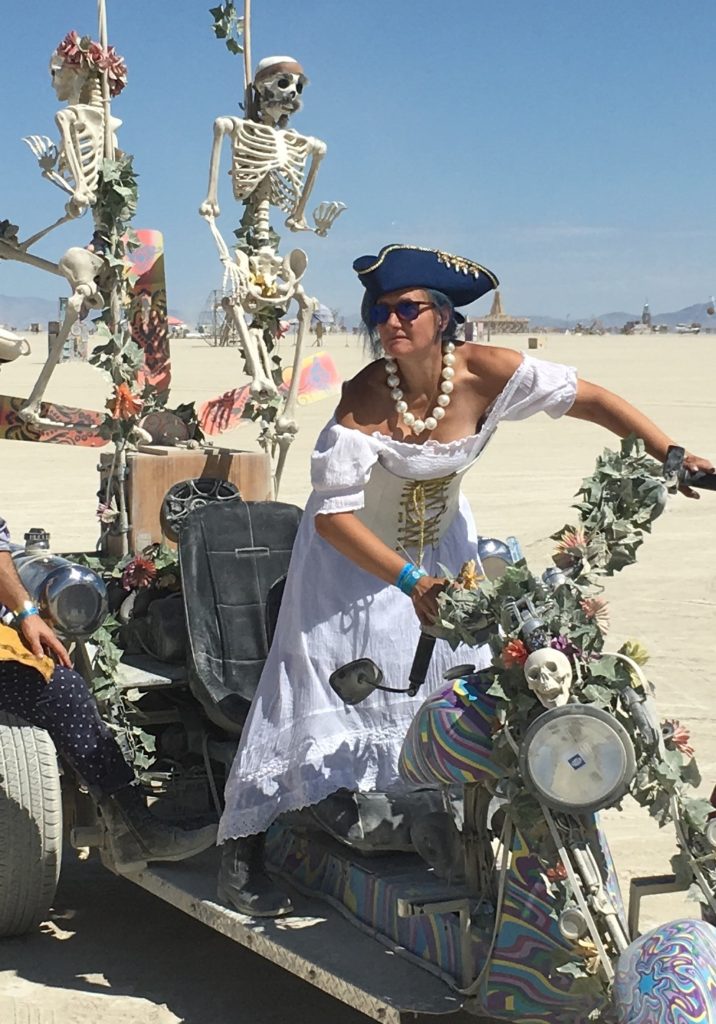 You need more fun & spontaneity in your life, and aren’t sure of next steps or the path to follow. Let’s connect! You could choose a free 15 minute chat, various courses, or even select one-to-one coaching.
You need more fun & spontaneity in your life, and aren’t sure of next steps or the path to follow. Let’s connect! You could choose a free 15 minute chat, various courses, or even select one-to-one coaching.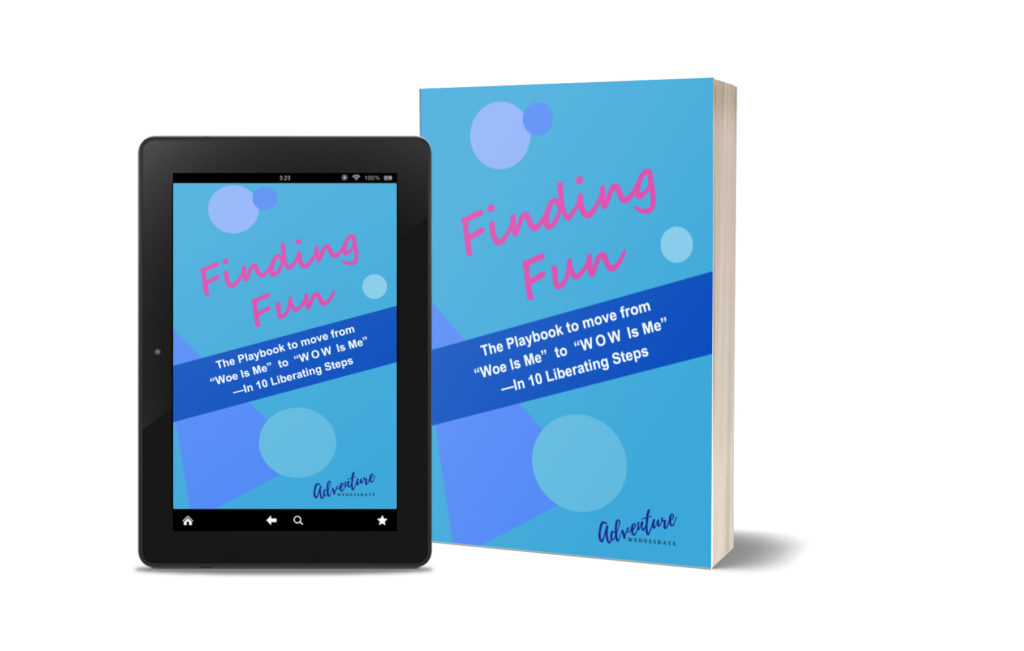


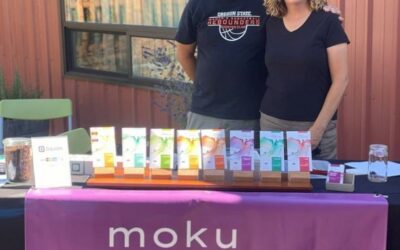
0 Comments